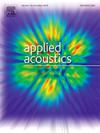Manipulation of submicron particles in fluid using microbubbles in microporous arrays as seeds
IF 3.4
2区 物理与天体物理
Q1 ACOUSTICS
引用次数: 0
Abstract
Existing bubble-acoustic microstreaming is merely capable of handling micron-sized particles. In this study, microbubbles confined in microporous arrays were used as seeds to manipulate submicron particles in fluid. To understand the working principle, a theory of governing equations of particle motion in bubble-acoustic microfluidics was built. A three-dimensional finite element model was developed to study the formation mechanism of submicron particles (r = 400 nm) in an acoustic streaming field. As follows, an experimental study is performed to verify the theory. In the experiments, bulk acoustic waves with a frequency of 830KHz is used to excite microbubble oscillations in microporous arrays. Microbubbles, oscillating in large aperture microporous arrays (30um and 40um) as seeds, have an unstable effect on capturing and pumping submicron particles(r = 400 nm). When the diameter of micropores is reduced to 15um, the microbubbles can capture a large number of submicron particles efficiently. Furthermore, the efficiency of trapping submicron particles is nearly ten times higher than that of using solid particles as seeds. The wavelength of acoustic waves is four orders of magnitude larger than the size of the submicron particles. The results showed that low-frequency bubble-acoustic microfluidic devices could provide a simple and cost-effective solution for effective and uniform manipulation of submicron biological particles.
求助全文
约1分钟内获得全文
求助全文
来源期刊

Applied Acoustics
物理-声学
CiteScore
7.40
自引率
11.80%
发文量
618
审稿时长
7.5 months
期刊介绍:
Since its launch in 1968, Applied Acoustics has been publishing high quality research papers providing state-of-the-art coverage of research findings for engineers and scientists involved in applications of acoustics in the widest sense.
Applied Acoustics looks not only at recent developments in the understanding of acoustics but also at ways of exploiting that understanding. The Journal aims to encourage the exchange of practical experience through publication and in so doing creates a fund of technological information that can be used for solving related problems. The presentation of information in graphical or tabular form is especially encouraged. If a report of a mathematical development is a necessary part of a paper it is important to ensure that it is there only as an integral part of a practical solution to a problem and is supported by data. Applied Acoustics encourages the exchange of practical experience in the following ways: • Complete Papers • Short Technical Notes • Review Articles; and thereby provides a wealth of technological information that can be used to solve related problems.
Manuscripts that address all fields of applications of acoustics ranging from medicine and NDT to the environment and buildings are welcome.
 求助内容:
求助内容: 应助结果提醒方式:
应助结果提醒方式:


